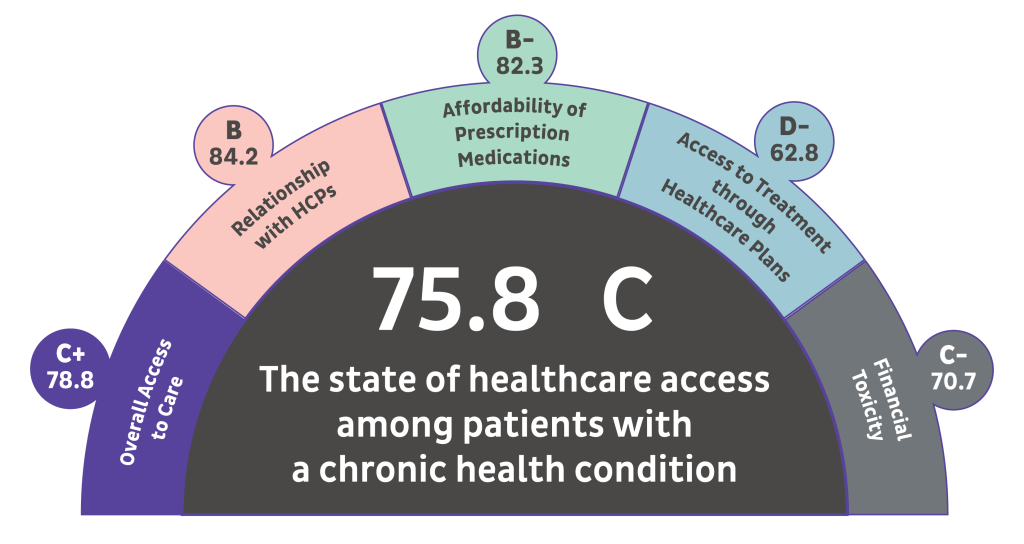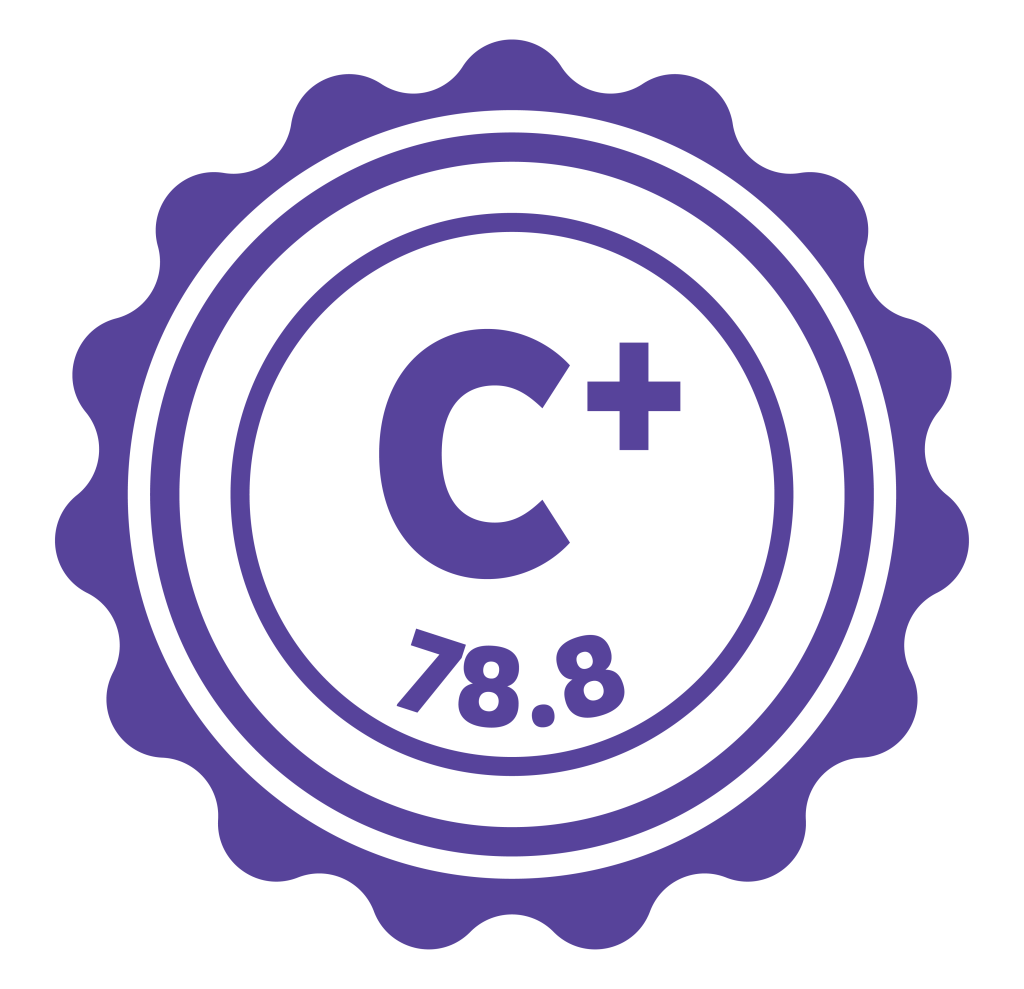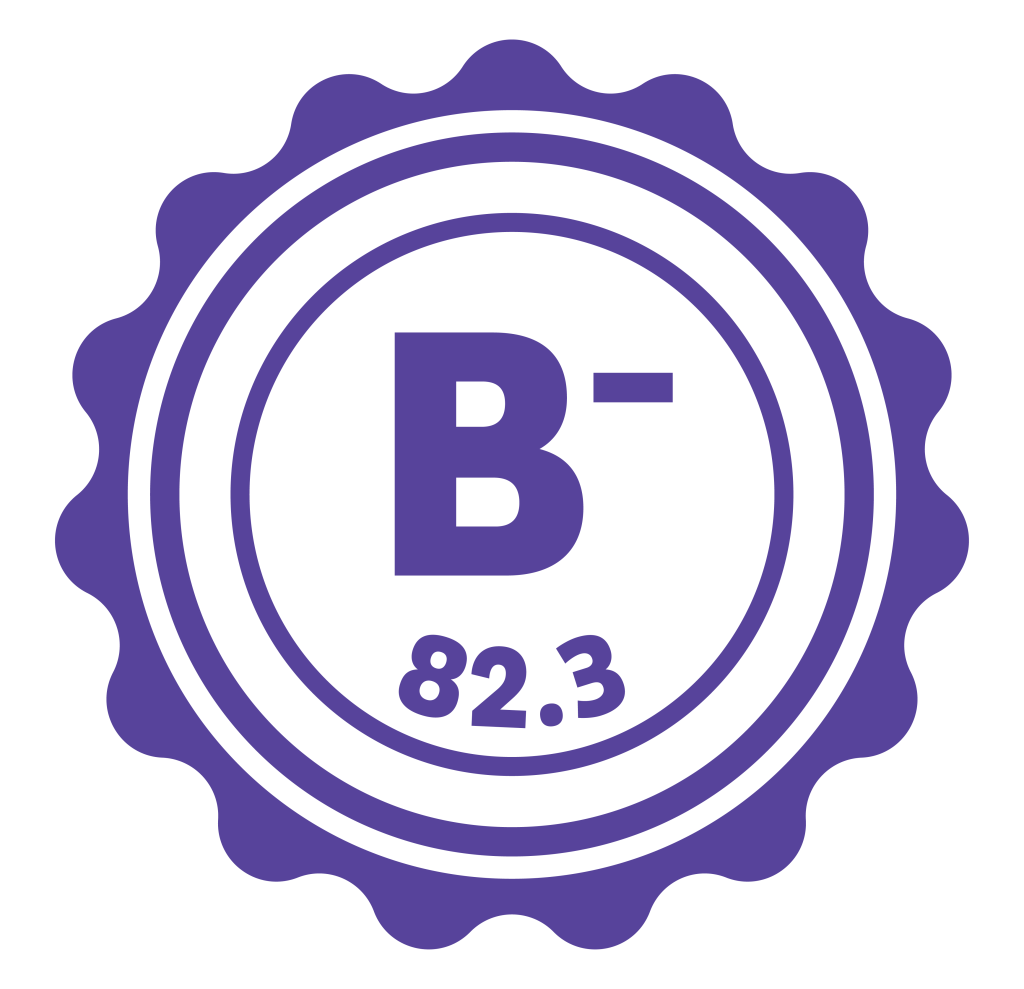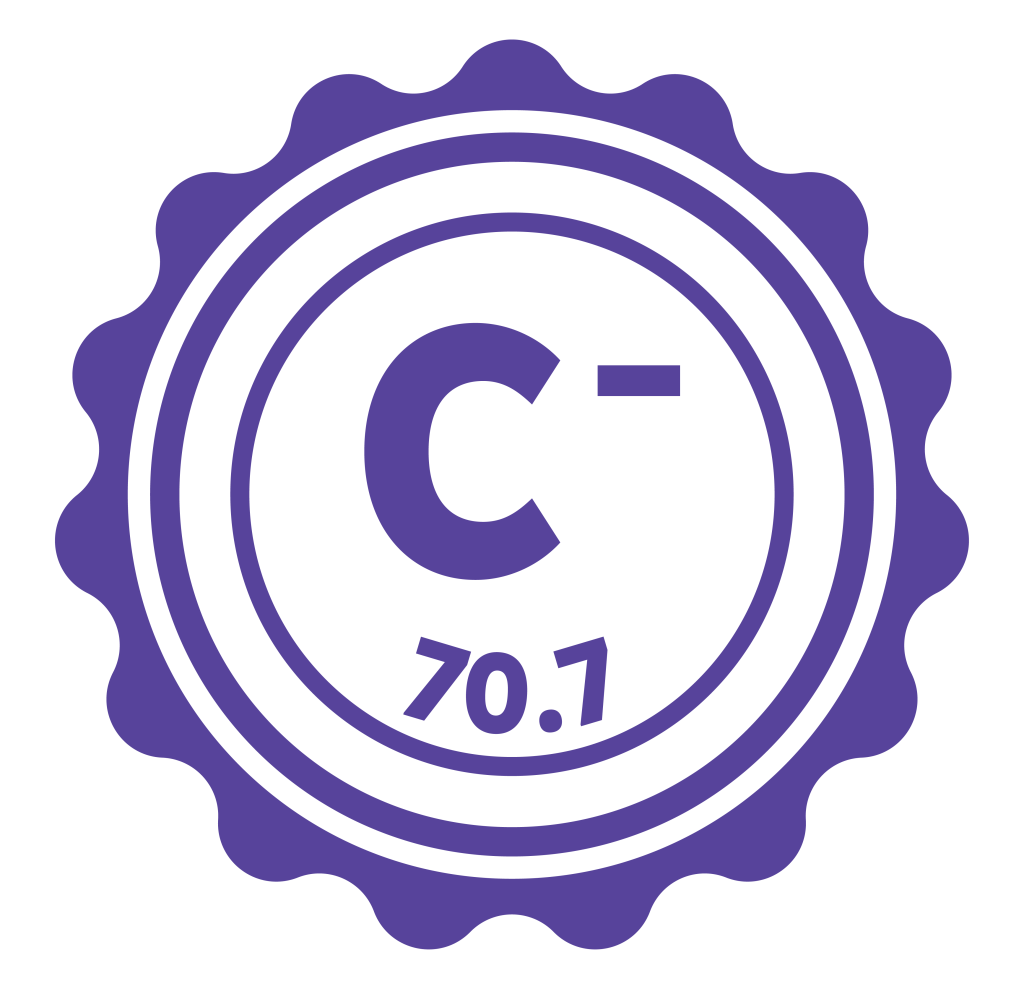Healthcare in the United States has become unaffordable and inaccessible for far too many patients—even for those with health insurance coverage.
Disparities based on race, ethnicity, language, sex and gender identity, sexual orientation, geography, and other sociodemographic factors have long contributed to unequal access to healthcare, positive health outcomes, and even life expectancy.
Background and methodology
To further explore the challenges patients are facing when it comes to healthcare access, and their impact on different communities, the PAN Foundation launched our annual State of Patient Access initiative in 2024. This groundbreaking initiative uses a comprehensive national survey, conducted by The Harris Poll, to hear directly from adults with chronic health conditions (referred to as “patients” throughout).
The patient survey results were then synthesized into a 2024 State of Patient Access Scorecard, organized into five key categories. We calculated an overall composite index score across categories, with individual scores for each subcategory. The scores were calculated both at the total patient level, and for a variety of subgroups within the broader patient population to highlight any disparities in access to care.
2024 key findings

Overall, the state of healthcare access among patients with a chronic health condition received a grade of “C,” or 75.8. Looking specifically at the five key categories included in the scorecard, the grades were:
- Overall Access to Care = C+ (78.8)
- Relationship with Healthcare Professionals = B (84.2)
- Affordability of Prescription Medications = B- (82.3)
- Access to Treatment through Healthcare Plans = D- (62.8)
- Financial Toxicity = C- (70.7)
Overall access to care is challenging for everyone, but even worse for historically marginalized communities.

Earning just a “C+” on the scorecard, our Overall Access to Care measure reflects that nearly one in five patients gave their healthcare access a “C” (18 percent) and rated the quality of care they had received in the past year as poor or fair (17 percent). Nearly half (48 percent) of patients faced logistical barriers to care, including trouble getting appointments (18 percent) and financial difficulties paying for needed care (13 percent). People of color (57 percent), younger patients (70 percent Gen Z or Millennials), and LGBTQIA+ patients (77 percent) were all more likely to report any logistical barriers to care.
Despite high trust in healthcare professionals, patient-provider relationships can be challenging for both sides.

Most patients surveyed trust their healthcare professionals, with 96 percent saying they trust their primary care physician, 95 percent trusting their specialist, and 94 percent trusting their nurse and nurse practitioner or physician assistant/associate. However, 28 percent of patients reported experiencing interactions with their healthcare professionals in the past 12 months that prevented them from getting the healthcare they needed, including 11 percent who said they felt their healthcare professional does not take their concerns seriously.
Many patients struggle to afford or obtain medications due to cost, but access is even harder for Hispanic, Native American or Pacific Islander, and LGBTQIA+ patients.

When it comes to affordability of prescription medications, 20 percent of patients said that their prescriptions were not at all or not very affordable, and 36 percent had taken some financial step—such as reducing other spending (15 percent) or taking on credit card debt (11 percent)—to afford their needed medications.
Access to treatment through insurance—both public and private—is one of the greatest challenges patients face today.

Across all patients, this category received a “D-” but fell to a failing grade of an “F” among Hispanic, Native American or Pacific Islander, and LGBTQIA+ patients, as well as younger patients (Gen Z or Millennials) and those with lower incomes (less than $50K). Affordability of healthcare plan deductibles (36 percent), challenges related to healthcare plans in accessing prescription medications (49 percent), and fear that their health plan will make access to their medications more difficult (41 percent) contribute to the ratings.
Health insurance does not sufficiently protect people from financial toxicity—regardless of insurance type.

Overall, more than one in five (22 percent) patients said that financial toxicity—defined as “the emotional, mental, and physically debilitating (and often-life threatening) financial side effects and burden associated with treatment for your chronic condition(s)—impacted them a great deal or a lot. Patients of color (31 percent), LGBTQIA+ patients (41 percent), and younger patients (36 percent Gen Z and Millennials) were more likely to report higher levels of financial toxicity than others. Similar rates of patients on private (21 percent) and public (23 percent) insurance said they experienced a great deal or a lot of financial toxicity.
2024 population insights
Other key findings in our 2024 report underscore inequities inherent in healthcare access, including:
- Patients identifying as LGBTQIA+ (77 percent), Native American or Pacific Islander patients (76 percent), and Hispanic patients (61 percent) were more likely to experience logistical challenges accessing needed healthcare than non-LGBTQIA+ patients (47 percent) or white patients (45 percent).
- More than one-quarter (31 percent) of LGBTQIA+ patients rated the quality of the care they received in the past 12 months as poor or fair, compared to 17 percent of non-LGBTQIA+ patients.
- Nearly 2 in 5 (38 percent) patients reported feeling that some aspects of their identity—such as their race/ethnicity, age, gender identity, income level, etc.—negatively impacted their ability to get the best possible care.
To read more about these and other population-specific insights, download our focus briefs on the following patient groups:
Next steps
The PAN Foundation hopes that these findings help to inform efforts by patient advocacy organizations, policymakers, and industry leaders to improve healthcare access, affordability and equity for all. Most notably, the findings point to key opportunities to:
- Explore legislative and regulatory policy solutions that can improve access to care for adults living with chronic conditions;
- Improve education and outreach efforts to advance health literacy; and
- Increase awareness of and access to needed financial assistance.
As an annual, flagship initiative of our new Center for Patient Research, we hope to see improvements in how adults with chronic conditions perceive and experience access to needed care and treatment, year over year. Because until everyone has access to affordable, equitable healthcare, we will keep advocating for change.